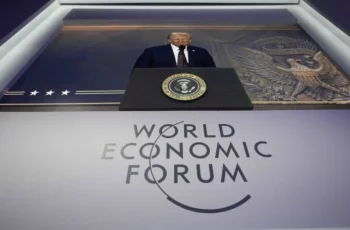
The end result might be the world’s bifurcation into the US-led “Global West” and the Chinese-led Global South.
Putin elaborated on his master plan for the Russian Arctic and Far East during his keynote speech at this year’s Eastern Economic Forum in Vladivostok last week. This piece will summarize what he shared and analyze it in the emerging geostrategic context. To begin with, he envisages these regions serving as industrial, logistics, and tech hubs due to their location and resources. Raw materials will fuel industry; rivers and new railways, seaports, and airports will facilitate logistics; and rare earths will drive tech.
Relevant coastal facilities will be constructed in the future, which might be powered by new hydroelectric plants, and these will be connected to one another and hinterland areas (resource deposits and settlements) by an integrated logistics system. More bridges will be built to China and North Korea too. Existing preferential policies for businesses in some areas and for residents under some conditions will be expanded throughout both regions to stimulate investment and increase the population there.
Reducing population outflow is a priority, as is encouraging the inflow of Russians from elsewhere, which more enterprises can assist with upon the state streamlining last year’s policy of reimbursing them with tax deductions for continuing to build social infrastructure for their employees in remote areas. The attendant public-private partnership that Putin envisages strengthening can therefore accelerate regional socio-economic development per his master plan for the Arctic and Far East.
The emerging geostrategic context will help achieve these goals. The center of the global economy has shifted from Europe to Asia, and with it, so too has Russia’s overall focus. China, India, and ASEAN (with Indonesia at its core) are considered Russia’s top partners in this regard. The latest updates are that Russia just clinched a long-negotiated deal over the Power of Siberia 2 gas pipeline; Putin plans to visit India by year’s end; and Russia clinched a strategic partnership deal with Indonesia earlier this summer.
Investments in the Transarctic Corridor (the Northern Sea Route plus planned rail-riparian connectivity to there from Siberia and the Far East) and the Eastern Polygon (the Trans-Siberian Railway and the Baikal-Amur Mainland railway) will help Russia tap into these near-limitless market opportunities. It would also ideally benefit from trade with and investments from the US, EU, Japan, South Korea, and Australia, but these pillars of the “Global West” decided to sanction Russia as punishment for its special operation.
That was counterproductive since China will now likely play an even more outsized role in the Arctic and Far East’s development, especially as regards resource extraction, thus turbocharging its superpower trajectory and hastening their demise. India and Indonesia can help Russia preemptively avert potentially disproportionate dependence on China, which serves all three’s interests, while the “Global West” will continue harming its own interests by eschewing any role in Russia’s geo-economic balancing act.
Absent a policy reversal, even if only in part and from just some of the “Global West” like nearby Japan and South Korea, the implementation of Putin’s master plan for the Arctic and Far East will provide a powerful impetus to BRICS’ and the SCO’s rise as their members seek to transform global governance. China will lead the way while Russia, India, and Indonesia will play important supportive roles. The end result might be the world’s bifurcation into the US-led “Global West” and the Chinese-led Global South.
Source: author’s blog










Comments